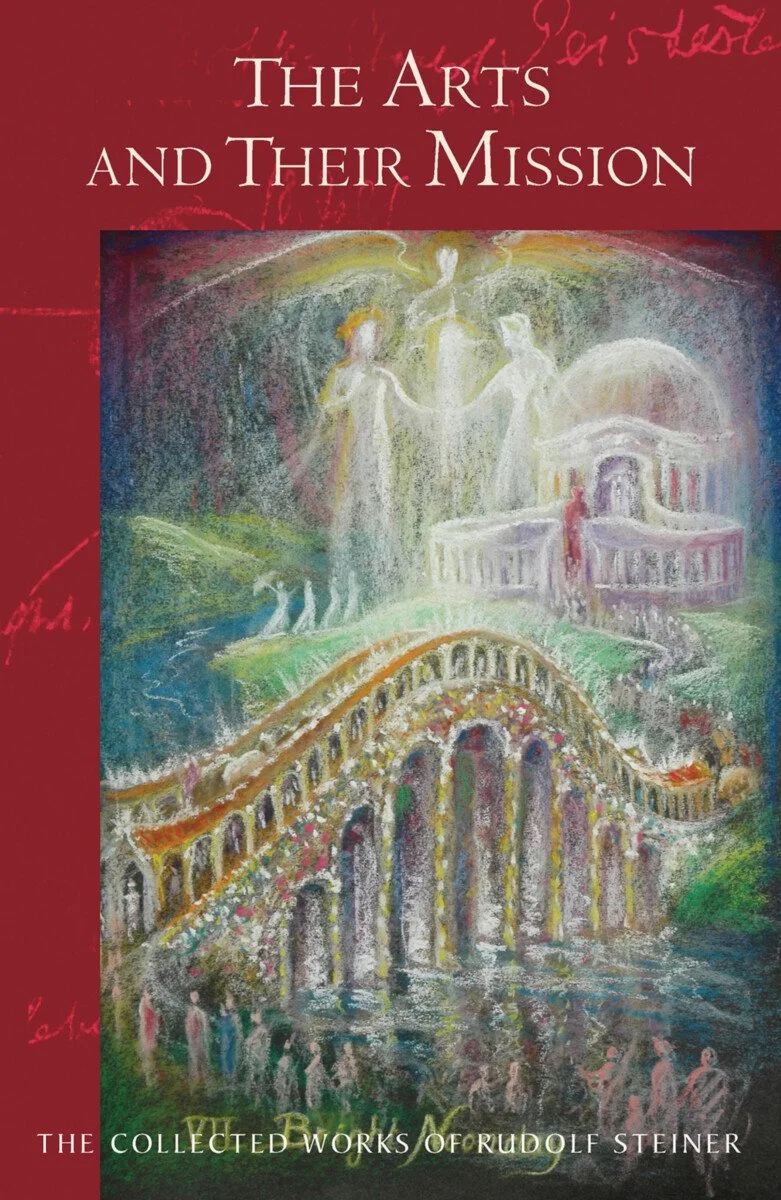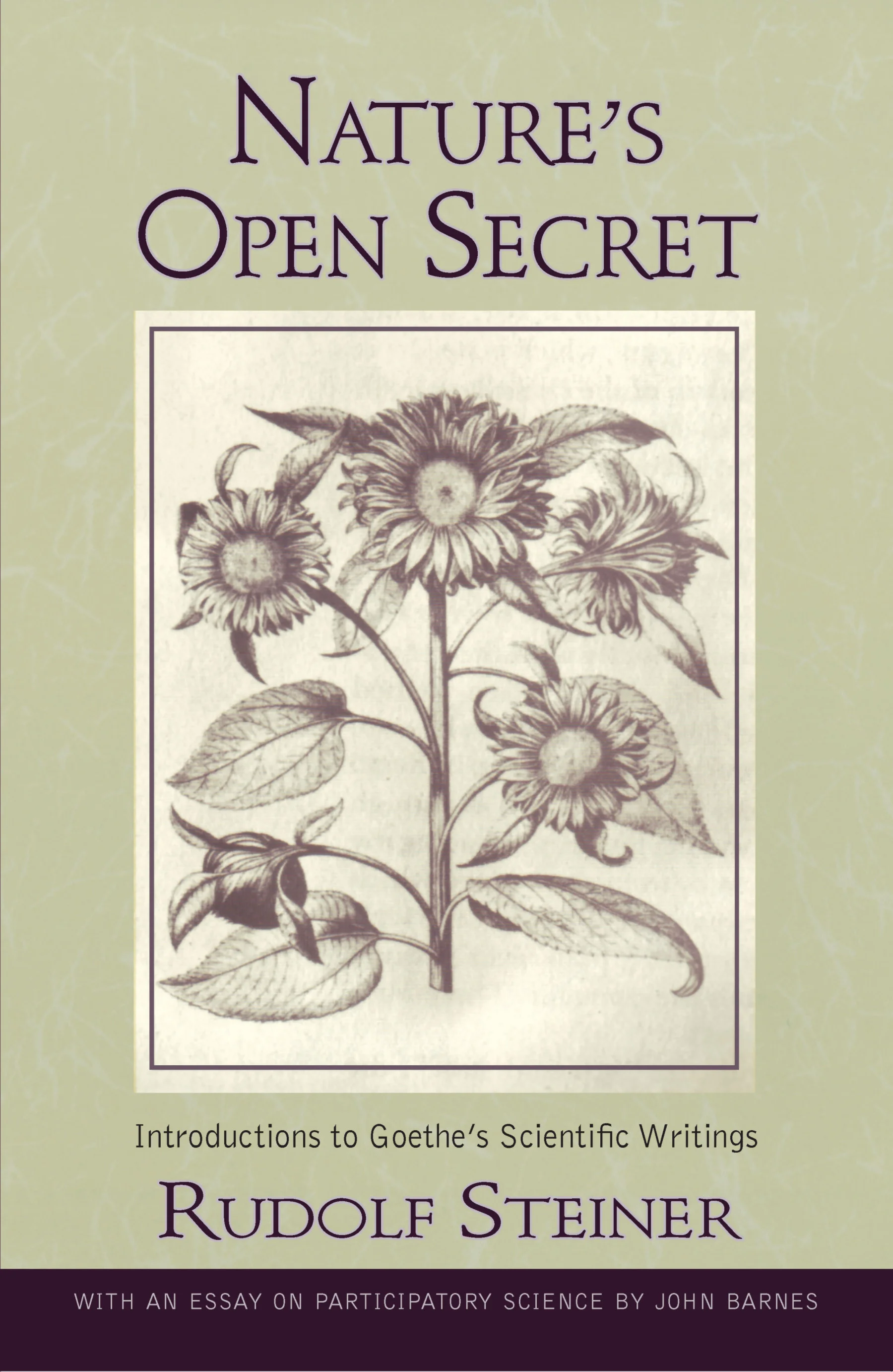The Arts and Their Mission
The Arts and Their Mission
DIGITAL BOOK - click here for printed edition
8 lectures, Oslo and Dornach, May 18 – June 9, 1923 (CW 276)
“Having remained stationary, we can no longer see the spiritual in the physical; we consider only the physical as such. This is materialism. A current has entered human evolution that is, if I may use the expression, hostile to development. Humanity shuns the coining of new concepts; it prefers to continue on with the old. We must overcome this hostility toward development. When we instead become friends of development, then we will acquire a quite natural relationship to anthroposophical spiritual development and pass over from antiquated needs to the truly modern need of humanity—namely, to raise ourselves to the spiritual.” — Rudolf Steiner (May 27, 1923)
In these inspired lectures from 1923, Rudolf Steiner weaves the different art forms—including painting, architecture, and music—into a grand tapestry of human experience and expression. In the process, he reveals how each artistic medium contains its own mysteries: how architecture arises out of the soul’s need to transition from the spatial to the spiritual world after death; how the art of costuming arises out of the soul’s pre-earthly experiences in the world of spirit and is thus an expression, in color and form, of the soul’s original nature; how sculpture emerges from an inner sense for the creative, formative forces of the etheric body; how painting can overcome spatial perspective through a new relationship to the world of colors, through color perspective; how music can receive a new direction from the depth-dimension of the single tone, which expands into melody and harmony; how poetry can be deepened through an inner grasp of the qualities inherent in recitation and declamation, through creative speech; and how the new art of eurythmy, arising out of the movement activity of the human archetype, stands midway between mime (indicative gesture) and dance (ecstatic gesture) as an art of expressive gesture.
Thus, Steiner outlines a path toward the reunion of that ancient trinity: science (truth), art (beauty), and religion (goodness). It was in the womb of the ancient mysteries—where knowledge was not only a matter for the mind but was carried over into religious rites—that the arts had their origin. Today, we learn facts and figures and believe we have understood reality. To an ancient humanity, this intellectual mode of understanding would have seemed lifeless and sterile. In the ancient world, knowledge became lived artistic experience and religious deed. Modern humanity must once again give wings to knowledge, must seek a deepening of the cognitive life through transformative artistic feeling, if we are to find our way out of our world crisis, which is, at its core, a crisis of the soul.
This remarkable volume, packed with profound and far-reaching insights, bears within it the seeds for the renewal of the arts in our time.
Includes four color plates of Rudolf Steiner's blackboard drawings.
This book is a translation of Das Künstlerische in seiner Weltmission, 4th ed. (Rudolf Steiner Verlag, 2002), GA 276. Cover Image: Bright Noonday, by David Newbatt, from Goethe, The Fairy Tale of the Green Snake and the Beautiful Lily (Wynstones Press 2006).
CONTENTS AND SYNOPSES:
Introduction by Virginia Moore
PART I. The Genius of Language: The World of Self-revealing Shining Appearance
1. DORNACH, MAY 27, 1923: The changing soul constitution of the post-Atlantean cultural epochs. A true understanding of the past goes back only to Roman times. The experience of one’s own being as cosmic-divine I during the ancient Indian epoch. In that ancient time, human beings experienced the divine in the course of the year through the astral body. In the Egyptian-Chaldean epoch, the central experience was living in the thought world through the etheric body. In the Greco-Roman epoch, the delight in taking hold of the physical body. In the fifth cultural epoch, we again became strangers to the physical body. The task of anthroposophy: to become aware of the spiritual, at first independent of its physical manifestation, so that one can find it again in the sensory-physical.
2. DORNACH, JUNE 1, 1923: The need for artistic activity arises from the human being’s relationship to the spiritual world. If we were purely natural beings, we would have no need for art. Naturalism in art is a consequence of the weak relationship of human beings to the spiritual world in our time. The origin of architecture is the tomb, in which human beings created the spatial forms needed by the soul in the transition from the spatial world to the spiritual world after death. In the art of costuming, man surrounds himself with color, which is an image of the astral world from which he is born. The human head as an image of the cosmos: Asgard (castle of the gods); Midgard (humanity’s earthly home); Jotunheim (home of the giants); an image of the tripartite human form and its metamorphosis, which reveals itself to the artistic sense trained by anthroposophy.
3. DORNACH, JUNE 2, 1923: Architecture points to the soul’s departure from the physical body, the art of costuming to the soul’s entrance into the body, whereas in sculpture one sees the human being spiritually, how he is placed into the present. Painting leads from space to the plane. Spatial perspective must be replaced by color perspective. The perception of colors in nature does not merely belong to the present moment; it is a seeing into the perspective of time, into the original creation of the gods. Music is one-dimensional; the human being experiences it in the stream of time as his own present soul content. In epic poetry, the upper divine world speaks through the human being; in drama, the gods of the depths, of the will, reveal themselves; in lyric poetry, the human being experiences, through feeling, the circumference of the earth.
4. DORNACH, JUNE 3, 1923: Art as a path to the earthly revelation of something supersensible in forms, colors, words, and sounds. Artistic creation is a struggle for harmony between the divine-spiritual and the physical-earthly. Goethe as a proponent of classicism, Schiller as a stimulator of romantic poetry. Ludwig Tieck as a mirror of Goethe’s artistic aspirations. Franz Sternbalds Wanderungen [Franz Sternbald’s journeys] and other works by Tieck. Goethe’s search for an encounter with antiquity in Italy. His book about Winkelmann. Goethe’s conception of art as the evening glow of the old spirituality; the necessity of a new path to spiritual life.
5. DORNACH, JUNE 9, 1923: Spirit and lack of spirit in painting. The content of painting is not the naturalistically depicted object but the play of color and light on the surface, the light-dark relationship from which the forms are born. In Titian, still out of tradition, there was a feeling for life in color: The Assumption of the Virgin. The genius of language: the beautiful is the appearance of the spiritual in the earthly, the ugly, what hides its essence and is therefore hated as untrue. Wisdom, beauty, and virtue. The tragic arises where the human being is in contact with the divine-spiritual. As human beings become free in thought and deed, the old form of tragedy passes away, but tragedy arises anew from karma. Genuine art needs to be placed in the context of the world.
PART II: Anthroposophy and Art—Anthroposophy and Poetry
1. OSLO, MAY 18, 1923: In the ancient mysteries, the word of wisdom led to ritual acts, which were at the same time a revelation of art. Modern humanity seeks knowledge only in abstract thoughts and thereby alienates himself from art. Anthroposophy awakens the need to bring knowledge to life through art. Architecture—the human being’s relationship to space through the physical body. The art of costuming—the inner soul unfolding in space. Sculpture—artistic cognition flows into the limbs and forms the plastic image from the forces of the etheric body. Painting: overcoming of the spatial world through the soul’s grasp of the world of color. Music: the play between the blood system and the nervous system. The spinal cord with the branching nerves—the lyre of Apollo. Poetry manifests the inner music in an outward direction. Eurythmy imitates the movement of the human archetype and stands between mime (indicative gesture) and dance (ecstatic gesture).
2. OSLO, MAY 20, 1923: The experience of the different qualities of image/shadow colors and luster colors. The artist must develop his feeling for the medium. Music is experienced completely inwardly. In Atlantis, the connection to the divine through the experience of the seventh, later in the fifth-experience of the spiritual at the boundary of the physical body. With the third, music moves completely into the inner being of man. New spiritualization of music—the depth-dimension of the individual tone expands into melody and harmony. The source of poetry is the imagination—the growth forces of childhood metamorphosed into soul forces. In Greek drama: the human being, permeated by the gods of the depths. In the epic: the goddesses of the heights speak through the poet. Speech formation; in the North, declamation—the weight of syllables has an effect; in the South, recitation—the measure of syllables has an effect. An art of the stage that overcomes naturalism must know what every movement on the stage means spiritually for the whole picture.
Rudolf Steiner’s Notebook Entries
Editorial and Reference Notes
Rudolf Steiner’s Collected Works
Significant Events in the Life of Rudolf Steiner
Index
Rudolf Steiner’s Blackboard Drawings
Need help? Click here for eBook FAQs.





